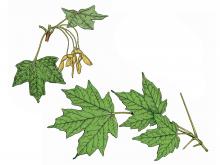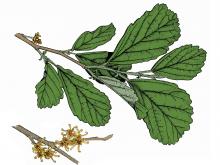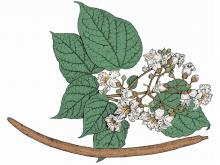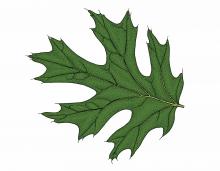Trees, Shrubs and Woody Vines
Media

Species Types
Scientific Name
Quercus bicolor
Description
A beautiful tree, swamp white oak features bicolored leaves that are shiny, dark green above and downy white below. When a breeze sets them in motion, their wavy or lobed shapes add a calm grace to a summer's hike.
Media

Species Types
Scientific Name
Quercus coccinea
Description
Scarlet oak is a common tree of the Missouri Ozarks. Today it occupies much the same area that shortleaf pine used to dominate before it was extensively cut prior to the 1920s.
Media

Species Types
Scientific Name
Platanus occidentalis
Description
The white, smooth-looking limbs of sycamore rise over countless streams and river banks, as well as over sidewalks and city streets. The leaves, which somewhat resemble those of maples, can reach remarkably large sizes.
Media

Species Types
Scientific Name
Acer rubrum
Description
Red maple is one of our most useful — and beautiful — native trees. You can find it in the woods as well as in landscape plantings statewide. Many horticultural varieties are available at nurseries.
Media

Species Types
Scientific Name
Acer saccharum
Description
Sugar maple is a tree that inspires much “oohing and aahing” during fall color season. Its sap is famous as a source for maple syrup, but its use in landscaping and for furniture is also widespread.
Media

Species Types
Scientific Name
Acer negundo
Description
A member of the maple family, box elder is often confused with poison ivy because its compound leaves sometimes grow in threes (though also in fives). A fast-growing tree, its winged seeds betray its relationship to other maples.
Media

Species Types
Scientific Name
Salix spp. (about 12 species in Missouri)
Description
Exotic willows are available at lawn and garden centers, but there are several willow species that are native to Missouri. Most are rather humble colonizers of gravel bars, riverbanks, and lakesides. Many are important for human economic interests. All have a place in our wild ecosystems.
Media

Species Types
Scientific Name
Hamamelis vernalis
Description
Ozark witch-hazel is a large native shrub that grows along dry, rocky streambeds in southern and east-central Missouri. The yellow, ribbonlike flowers bloom as early as January. In the fall, the seeds are ejected forcefully, to a distance of up to 30 feet!
Media

Species Types
Scientific Name
Catalpa speciosa
Description
Of the three species of catalpas in our state, northern catalpa is the only one native to Missouri (specifically, the Bootheel region). It has been planted widely, though, and has naturalized in many places. A popular ornamental and shade tree with pretty, orchidlike flowers and long, beanlike fruit.
Media

Species Types
Scientific Name
Quercus velutina
Description
Black oak grows throughout Missouri, in upland woods, on glades, and along borders of woods and fields. It and scarlet oak were the primary colonizers of Ozark pinelands when the native pines were cleared in the early 1900s.
See Also
About Trees, Shrubs and Woody Vines in Missouri
There are no sharp dividing lines between trees, shrubs, and woody vines, or even between woody and nonwoody plants. “Wood” is a type of tissue made of cellulose and lignin that many plants develop as they mature — whether they are “woody” or not. Trees are woody plants over 13 feet tall with a single trunk. Shrubs are less than 13 feet tall, with multiple stems. Vines require support or else sprawl over the ground.





















